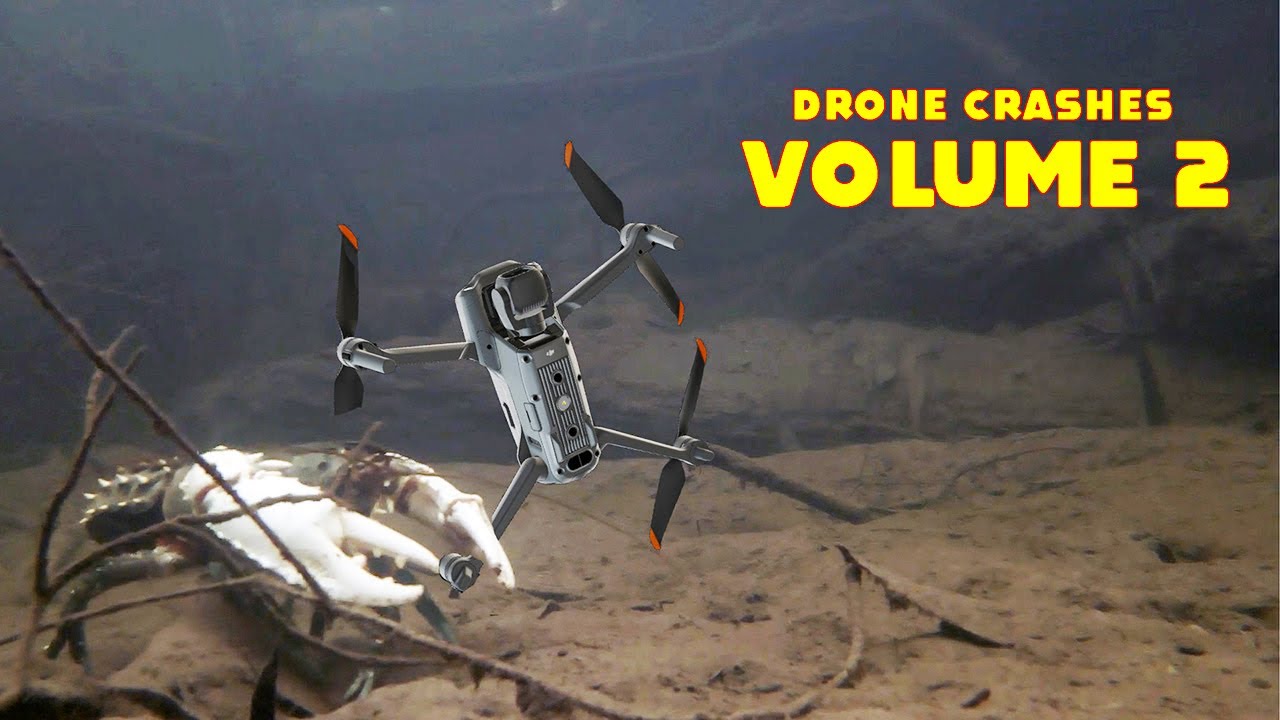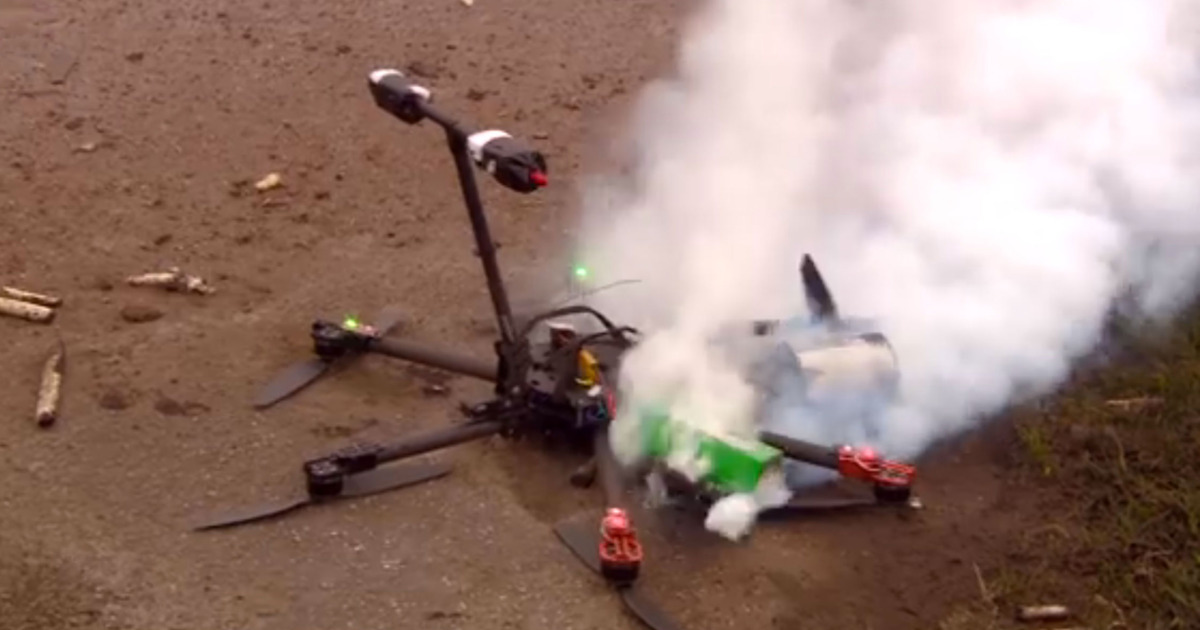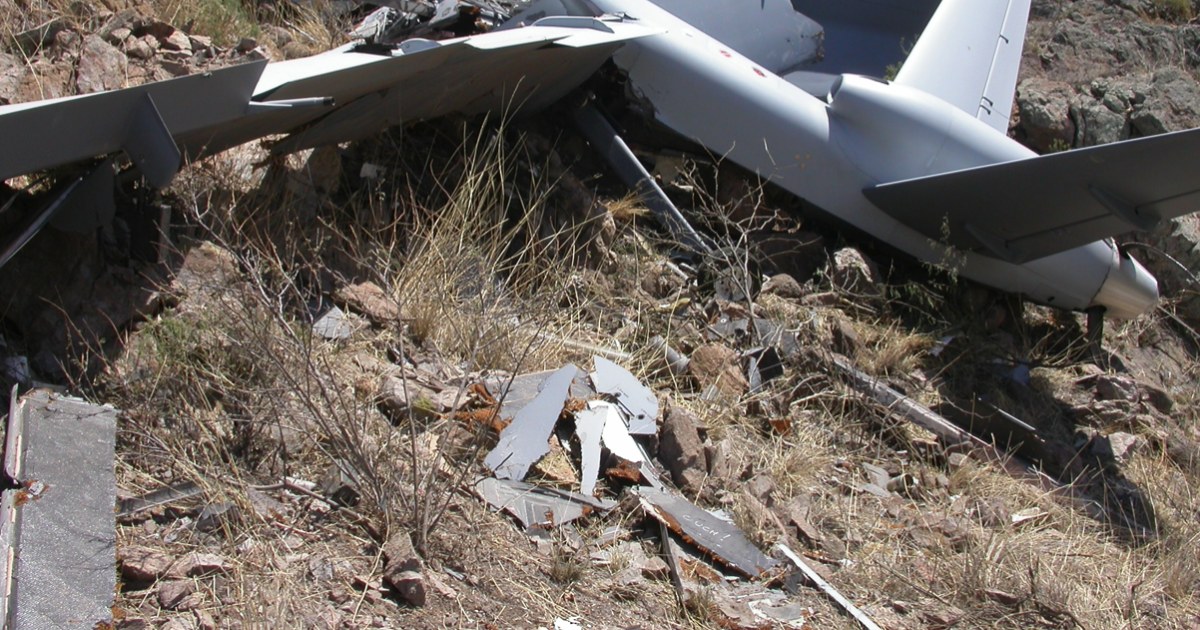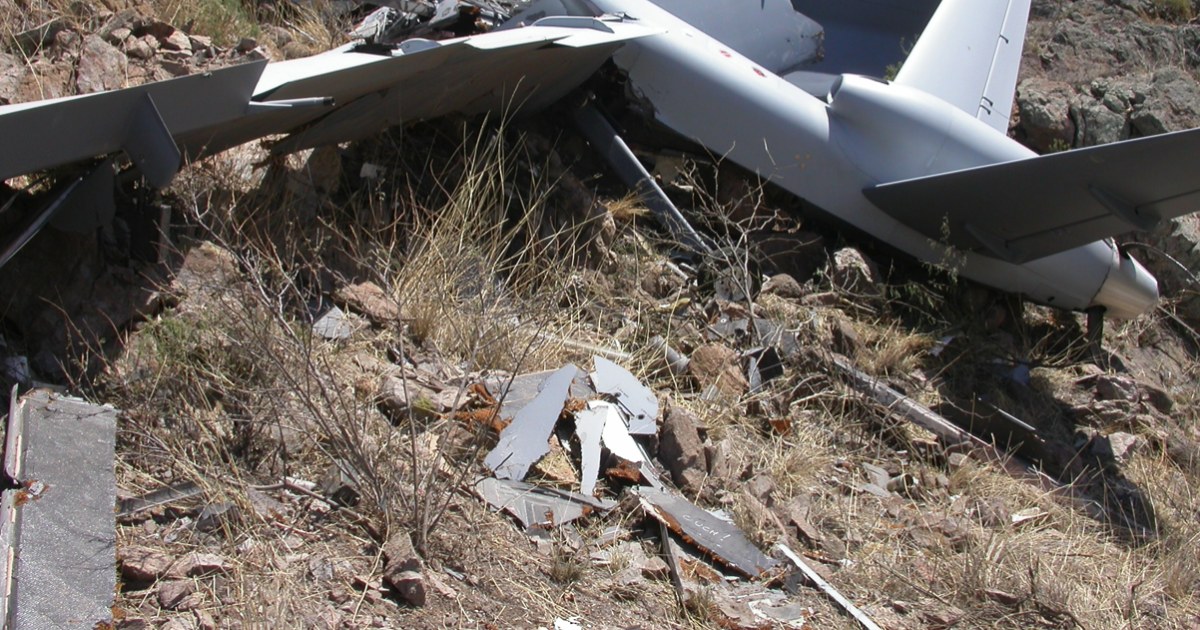Drone crash in Paris: Imagine the scene – a sudden, unexpected crash of a drone in the heart of the City of Lights. This incident throws into sharp relief the complexities of drone technology, urban airspace management, and the potential consequences of malfunction or misuse. We’ll explore the immediate aftermath, the investigation, and the broader implications for drone safety regulations and public perception.
This analysis will delve into the specifics of the drone involved, its likely flight path, and potential causes of the crash, examining both mechanical failures and human error. We’ll also look at the impact on Parisian infrastructure, the public response, and the ongoing debate surrounding drone regulations in urban environments. Get ready for a fascinating look at a real-world event with far-reaching consequences.
Immediate Aftermath of the Drone Crash

The sudden crash of the drone sent shockwaves through the Parisian scene. Eyewitnesses reported a loud whirring sound followed by a sharp crack, the drone plummeting from the sky in a chaotic descent. The immediate aftermath was a mixture of confusion, concern, and a surprising amount of collective gasps from onlookers.The impact itself, while not catastrophic on a large scale, caused a localized disruption.
The drone, a relatively large model judging by eyewitness accounts, struck a small vendor’s cart near the Seine River, scattering pastries and causing minor damage to the cart’s structure. Fortunately, no individuals were directly injured by the falling drone, though several people nearby experienced a near miss and were understandably shaken.
Damage Assessment
The damage caused by the drone crash was primarily limited to the vendor’s cart. Photographs circulating online showed a significant dent in the cart’s metal frame and a scattering of broken pastries and other goods. The drone itself was heavily damaged, with its propellers broken and its body showing signs of significant impact. Beyond the immediate area of impact, there was no evidence of wider damage to property or infrastructure.
Timeline of Events
Initial reports of the crash flooded social media within minutes, with numerous eyewitness videos and photographs quickly surfacing online. Emergency services received their first call approximately five minutes after the impact. Police and paramedics arrived at the scene within ten minutes, securing the area and assessing the situation. The drone’s wreckage was collected and taken away for investigation shortly after.
By midday, the area had been cleared, and the vendor was able to begin the process of cleaning up and assessing the damage to their cart.
Drone Specifications and Operational Details
The investigation into the Parisian drone crash requires a thorough understanding of the drone’s capabilities and the circumstances surrounding its flight. This section details the drone’s specifications, its likely flight path, and potential technical malfunctions that may have contributed to the incident. Accurate information is crucial for determining responsibility and preventing future accidents.
Determining the exact make and model of the drone is paramount. This, coupled with operational details, will allow investigators to pinpoint potential flaws in design, manufacturing, or operation. Understanding the drone’s capabilities helps determine whether the flight path was within its operational parameters and whether the pilot acted within safety regulations.
So, you heard about that drone crash in Paris? It got me thinking about the bigger picture – how often do these things actually happen? To get a better understanding of the frequency and potential causes, check out this informative resource on drone crashes in Paris. Learning about these incidents helps us understand the safety challenges and potential improvements needed to prevent future drone crashes in Paris.
Drone Specifications and Potential Malfunctions
While the exact model remains under investigation, we can speculate based on common drone types used for aerial photography and videography in urban environments. Let’s consider a hypothetical scenario using a popular model to illustrate the analysis process.
| Make | Model | Specifications | Potential Malfunctions |
|---|---|---|---|
| DJI | Mavic 3 Pro | Three-camera system (24mm, 70mm, 166mm), 46-minute flight time, 15km transmission range, obstacle avoidance sensors (front, back, bottom, sides), GPS, RTK positioning. | GPS signal loss leading to uncontrolled descent; Gimbal malfunction causing camera failure or instability; Obstacle avoidance system failure resulting in collision; Battery failure due to extreme temperature or age; Firmware glitch causing erratic behavior; Radio frequency interference disrupting communication with the controller. |
Likely Flight Path and Purpose, Drone crash in paris
The drone’s likely flight path and purpose are crucial elements in reconstructing the event. Analyzing eyewitness accounts, security camera footage, and flight logs (if recoverable) will help determine the drone’s trajectory, altitude, and speed. This information, combined with the drone’s capabilities, will provide insights into whether the pilot adhered to safety regulations and whether the flight plan was appropriate for the location.
For example, if the drone was used for filming a tourist attraction, its flight path would likely have followed a pre-planned route, possibly involving specific angles and altitudes. Conversely, if used for unauthorized aerial surveillance, its trajectory might have been more erratic and less predictable. The purpose of the flight dictates the acceptable risk level and the expected flight parameters.
A commercial operation would require stricter adherence to regulations than a hobbyist’s flight.
Investigation and Response

Following the drone crash in Paris, a multi-agency investigation was immediately launched to determine the cause of the incident, identify those responsible, and assess any potential security implications. The investigation involved a coordinated effort between various French authorities, including the police, gendarmerie, air accident investigation bureau (BEA), and potentially other specialized agencies depending on the nature of the drone and its payload.The investigative procedures likely involved a thorough examination of the crash site, recovery and analysis of the drone wreckage, review of air traffic control recordings, and interviews with potential witnesses.
Investigators would have sought to establish the drone’s flight path, its origin, and the identity of its operator. Analysis of the drone’s onboard systems (if any) and flight data would be crucial in piecing together the events leading up to the crash. Depending on the circumstances, cybersecurity experts may have also been involved if there was evidence of remote hacking or system malfunction.
Official Statements and Press Releases
Official statements and press releases would have been issued by relevant French authorities in a phased approach. Initial statements might have focused on confirming the incident, assuring public safety, and outlining the initial investigative steps. Subsequent releases would have provided updates on the progress of the investigation, including key findings as they became available. It is common practice for authorities to avoid speculating publicly on the cause of the incident until a thorough investigation is complete.
The timing and frequency of press releases would have been determined by the need to balance transparency with the ongoing investigation and the sensitivity of the information involved. Consider, for example, the controlled release of information following a major airliner crash, where initial statements focus on immediate safety and rescue efforts before moving towards more detailed updates on the investigation.
These releases often avoid prematurely assigning blame or speculation.
Investigative Findings and Outcomes
The specific findings of the investigation would depend heavily on the facts of the case. Possible outcomes could include identifying the drone’s operator, determining the cause of the crash (mechanical failure, operator error, malicious intent, etc.), and assessing any potential violations of aviation regulations. The investigation may lead to legal proceedings against the operator or others involved. If the drone was carrying a hazardous payload or caused significant damage, the investigation would be more extensive and may involve additional agencies, possibly even international cooperation if the drone’s origin or intended target were outside of France.
The final report would likely be made public, at least in summary form, after the investigation is concluded, and any legal proceedings are settled. This final report would detail the investigation’s methodology, findings, and conclusions, including recommendations for preventing similar incidents in the future.
Impact on Parisian Infrastructure and Society

The drone crash in Paris, while seemingly a localized incident, had ripple effects across the city’s infrastructure and social fabric. The immediate impact was felt in the area surrounding the crash site, but the longer-term consequences extended to transportation networks, local businesses, and the public’s perception of safety and security. The scale of disruption depended heavily on the drone’s size, the location of the crash, and the effectiveness of the emergency response.The severity of the disruption to Parisian life depended significantly on the specifics of the drone crash.
For instance, a crash in a heavily trafficked area during rush hour would have far greater consequences than a crash in a sparsely populated park at night. Factors like the type of damage caused (power lines down, building damage, etc.) also played a crucial role in determining the overall impact.
Traffic and Transportation Disruptions
The crash may have caused temporary road closures and detours, potentially leading to traffic congestion and delays for commuters and public transportation. Depending on the location, this could have impacted bus routes, metro lines, or even taxi services. For example, a crash near a major highway could lead to significant traffic backups, while a crash in a less central location might have had a more localized impact.
The duration of these disruptions would depend on the time taken to secure the area, remove debris, and repair any damaged infrastructure.
Disruption to Local Businesses and Residents
Businesses in the immediate vicinity of the crash site could have experienced disruptions to their operations. If the crash damaged buildings or infrastructure, businesses might have been forced to temporarily close for safety reasons or due to power outages. Residents living nearby might have experienced noise and disruption from emergency services and the subsequent investigation. The economic impact on local businesses would depend on the length of the closure and the extent of the damage.
For instance, a restaurant forced to close for a day could suffer a loss of revenue, while a small shop might face more significant long-term consequences depending on the nature of the damage.
Public Reaction and Media Coverage
The public reaction and media coverage of the drone crash would likely vary depending on the severity of the incident and the circumstances surrounding it.
- Initial reactions might range from concern and curiosity to anger and frustration, depending on the impact on individuals and the perceived negligence involved.
- Media coverage would likely be extensive, with news outlets reporting on the event, its causes, and its consequences. The tone of the coverage could range from objective reporting to sensationalized accounts, depending on the news outlet and the overall narrative.
- Social media would likely play a significant role in disseminating information and shaping public opinion. Users might share videos and photos of the crash site, speculate on the causes, and express their opinions on the incident and the response from authorities.
- Depending on the severity and the perceived responsibility, there could be calls for stricter drone regulations and increased safety measures.
Drone Safety Regulations and Implications
The recent drone crash in Paris highlights the urgent need for robust and harmonized drone safety regulations in urban environments worldwide. Current regulations vary significantly across major cities, leading to inconsistencies and potential risks. This section will compare and contrast existing regulations, analyze the implications of the Parisian incident, and propose improvements to enhance drone safety protocols.
Comparison of Drone Safety Regulations in Major Cities
Several major cities have implemented varying levels of drone regulations. For example, New York City has strict regulations regarding drone operation near critical infrastructure, requiring permits and adherence to specific flight paths. Conversely, some European cities may have less stringent regulations, focusing more on general airspace restrictions rather than specific operational guidelines. These discrepancies create challenges for both drone operators and regulatory bodies in ensuring consistent safety standards across international borders.
The lack of a unified global standard necessitates a more coordinated approach to managing the increasing use of drones in urban areas. This includes establishing clear guidelines for registration, operator licensing, and operational limitations.
Implications of the Paris Drone Crash for Future Regulations
The Paris drone crash underscores the potential consequences of inadequate safety protocols. The incident will likely lead to stricter regulations regarding drone operation in densely populated areas, potentially including mandatory geofencing, real-time monitoring systems, and increased penalties for violations. Furthermore, the crash may prompt a reevaluation of existing licensing and certification procedures for drone operators, emphasizing the need for thorough training and proficiency assessments.
Insurance requirements for drone operation are also likely to become more stringent, mirroring the insurance protocols for other potentially hazardous activities. For example, the incident might lead to increased requirements for liability insurance, similar to what’s required for automobile drivers.
Recommendations for Improved Drone Safety Protocols in Urban Environments
Improved drone safety protocols should focus on a multi-faceted approach. This includes:
- Mandatory Geofencing: Implementing sophisticated geofencing technology to restrict drone flights over sensitive areas, such as airports, hospitals, and crowded public spaces. This would prevent accidental incursions into restricted zones.
- Real-time Monitoring and Control Systems: Developing and deploying advanced systems capable of monitoring drone activity in real-time, allowing for immediate intervention in case of malfunction or unauthorized flight paths. This could involve integrating drone flight data with air traffic control systems.
- Enhanced Operator Training and Certification: Establishing rigorous training programs for drone operators, covering aspects such as flight safety, emergency procedures, and airspace regulations. This would necessitate standardized certification processes to ensure competency.
- Improved Drone Technology: Promoting the development and adoption of safer drone technologies, such as fail-safe mechanisms, automatic emergency landing systems, and improved obstacle avoidance capabilities. This would minimize the risk of accidents caused by technical malfunctions.
- Public Awareness Campaigns: Conducting comprehensive public awareness campaigns to educate the public about drone safety, responsible operation, and potential risks associated with drone usage. This would encourage responsible drone use and promote better understanding.
Potential Causes and Prevention: Drone Crash In Paris

Understanding the reasons behind the Parisian drone crash is crucial for implementing effective preventative measures. Several factors, acting individually or in combination, could have contributed to the incident. A thorough investigation will be necessary to pinpoint the exact cause.Several contributing factors could have led to the drone’s malfunction and subsequent crash. These range from technical issues with the drone itself to human error on the part of the operator, or even unforeseen environmental circumstances.
Addressing these potential causes requires a multi-faceted approach involving technological advancements, improved operator training, and stricter regulatory frameworks.
Mechanical Failure
Mechanical failure encompasses a range of possibilities, including malfunctioning motors, battery issues, or problems with the drone’s flight control system. For instance, a sudden motor failure mid-flight could cause the drone to lose control and plummet. Similarly, a battery short-circuiting or experiencing a rapid discharge could lead to a power loss and subsequent crash. Regular maintenance, thorough pre-flight checks, and the use of high-quality, reliable components are vital in mitigating these risks.
A comprehensive inspection of the recovered drone wreckage will be key to determining if mechanical failure was a factor.
A recent drone crash in Paris highlighted the growing concerns about airspace safety in major cities. To understand the broader picture, it’s helpful to look at the overall frequency of drone crashes in Paris , which reveals a pattern of incidents requiring further investigation and regulatory adjustments. This specific drone crash in Paris, therefore, isn’t an isolated event but rather part of a larger trend demanding attention.
Pilot Error
Human error is a significant contributor to drone accidents. Inexperience, poor judgment, or a failure to adhere to safety protocols can all lead to crashes. For example, flying the drone beyond the operator’s visual line of sight, ignoring weather warnings, or attempting maneuvers beyond the drone’s capabilities could easily result in an accident. Improved pilot training, including simulator practice and rigorous certification programs, is essential to address this.
Furthermore, stricter adherence to established flight guidelines and the use of flight planning software can help prevent accidents stemming from pilot error.
External Factors
External factors, such as strong winds, unexpected obstacles, or interference from other electronic devices, can also contribute to drone crashes. Imagine a scenario: A drone is flying smoothly over the Seine River, when a sudden gust of wind, stronger than predicted, catches the drone, causing it to lose altitude and crash into a nearby building. To mitigate these risks, operators must carefully monitor weather conditions and avoid flying in adverse weather.
Furthermore, the use of obstacle avoidance systems and awareness of potential sources of electromagnetic interference can significantly reduce the risk of accidents caused by external factors. This also highlights the need for effective airspace management and coordination between drone operators and other air traffic users.
Legal and Ethical Considerations
The drone crash in Paris raises significant legal and ethical questions surrounding the operation of unmanned aerial vehicles (UAVs) in densely populated urban environments. Understanding the legal ramifications for the operator and the broader ethical implications of drone use is crucial for preventing future incidents and establishing responsible drone operation guidelines.
Legal Ramifications for the Drone Operator
The legal consequences for the drone operator will depend on several factors, including the specific regulations violated, the extent of the damage caused, and the operator’s intent. French law, like many other jurisdictions, holds drone operators liable for any damage or injury caused by their negligence or unlawful operation. Potential charges could range from fines for violating airspace regulations to more serious penalties, including imprisonment, if the crash resulted in significant property damage or personal injury.
For example, if the operator was flying the drone in a restricted airspace without permission, or failed to maintain a safe distance from people and buildings, they could face substantial legal repercussions. The investigation will determine the precise violations and the appropriate legal response.
That drone crash in Paris really highlights the risks involved in aerial delivery, right? It makes you wonder about the safety measures in place for services like Amazon’s drone delivery program. Check out this map of amazon drone delivery locations to see where they’re operating and maybe get a better understanding of their safety protocols. Hopefully, incidents like the Paris crash will lead to improved safety standards for all drone operations.
Ethical Implications of Drone Use in Densely Populated Areas
Operating drones in densely populated areas like Paris presents significant ethical challenges. The potential for harm to individuals and property is considerably higher in such environments. Ethical considerations involve balancing the benefits of drone technology (e.g., aerial photography, surveillance) with the risks associated with their operation. A key ethical concern is the potential for privacy violations, as drones equipped with cameras can easily capture images and videos of private individuals and spaces without their knowledge or consent.
Furthermore, the responsible and safe operation of drones requires a high degree of awareness and consideration for the surrounding environment and its inhabitants. The ethical obligation rests on the operator to prioritize safety and respect the privacy and well-being of others.
Legal Framework Surrounding Drone Operation in France
France has a relatively comprehensive legal framework governing the operation of drones. This framework encompasses regulations concerning drone registration, pilot certification, airspace restrictions, and operational limitations. Specific regulations dictate the maximum permissible weight of drones, the required distances from populated areas, and the necessary authorizations for commercial or professional drone operations. The French Directorate-General for Civil Aviation (DGAC) is the primary authority responsible for enforcing these regulations.
Non-compliance with these regulations can lead to significant fines and legal consequences. The specifics of these regulations are constantly evolving as drone technology advances and the use cases become more diverse. It is imperative for all drone operators to be thoroughly familiar with the current legal requirements before operating a drone in France.
Final Summary
The drone crash in Paris serves as a stark reminder of the potential risks associated with drone technology in densely populated areas. While drones offer incredible opportunities, careful consideration of safety regulations, responsible operation, and robust investigation procedures are crucial to mitigate future incidents. The incident highlights the need for ongoing dialogue and improved protocols to ensure the safe integration of drones into our urban landscapes.
The lessons learned here can inform safer drone operations globally, shaping the future of this rapidly evolving technology.
Question & Answer Hub
What type of damage was caused by the drone crash?
The extent of damage varied depending on the location of impact and the drone’s size and weight. Possible damage could range from minor property damage to more significant structural damage, depending on the specifics of the incident.
Were there any injuries reported as a result of the crash?
This would depend on the specifics of the incident. The answer will be found in official reports following the investigation.
What is the legal penalty for operating a drone illegally in Paris?
Penalties for illegal drone operation vary depending on the severity of the violation and local laws. Fines and even imprisonment are possible.
How common are drone crashes in Paris?
Data on the frequency of drone crashes in Paris would need to be gathered from official sources, such as local authorities or aviation safety agencies.
